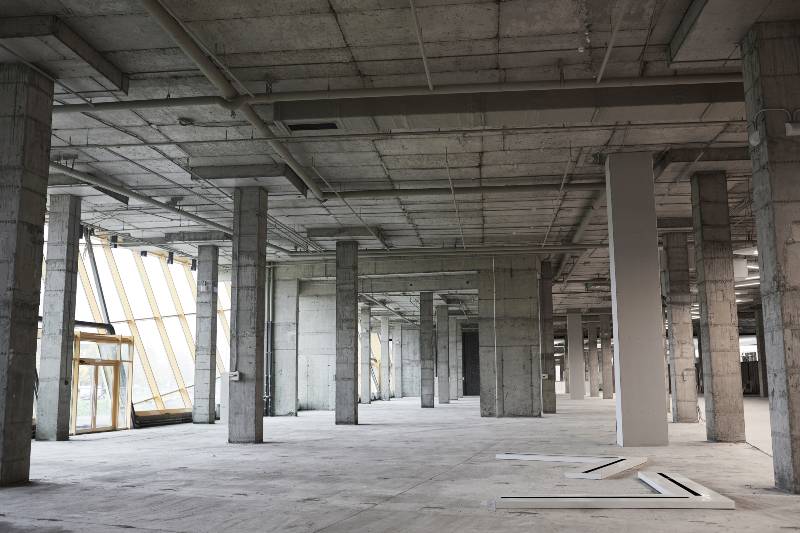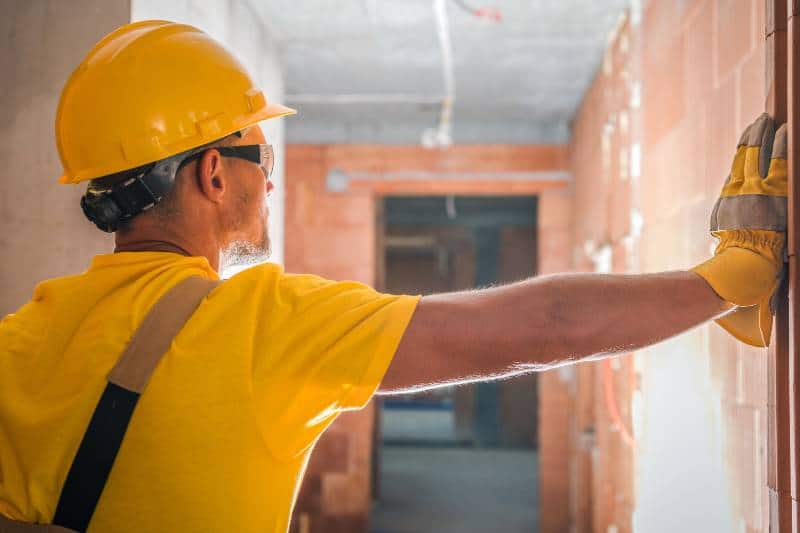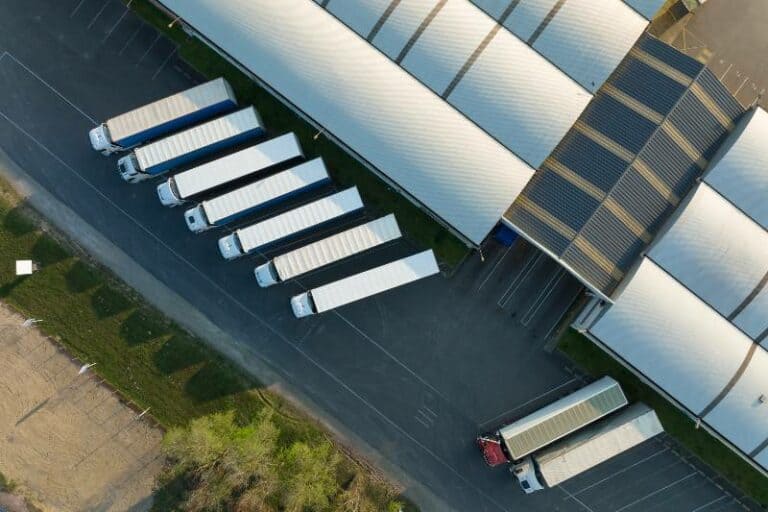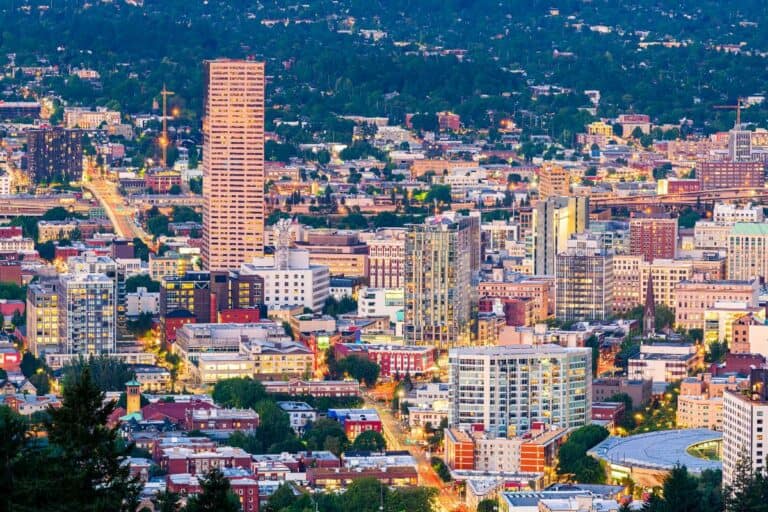Repurposing industrial commercial properties involves utilizing outdated or otherwise unusable existing buildings and using spaces for other purposes like office buildings. The practice is invaluable because it allows us to take retail properties, residential units, and vacant malls that are not being used to their full potential, and give them a new lease on life, while also preserving their widely appreciated cultural and historical value. In this blog post, we will be exploring the specific benefits of repurposing commercial real estate. We will discuss the advantages from an environmental, economic, and social perspective so that readers can gain a better understanding of why communities need to pursue this practice.
Instead of taking down existing structures and reconstructing them from the ground up, adaptive reuse projects of industrial buildings encourage the extension of the life of those structures that already exist. As a consequence of this, developers make an effort to preserve a sizeable portion of the structure’s initial form.
Key Takeaways
- Repurposing industrial commercial real estate is an essential practice for communities to pursue, as it provides a range of benefits from an environmental, economic, and social perspective.
- These advantages include reducing land waste and preserving cultural value especially historic buildings, and older buildings, providing cost savings through reuse instead of constructing new buildings or office space, or other commercial spaces, creating job opportunities in the local economy and revitalizing neighborhoods.
- With all of these advantages, repurposing industrial properties is an essential practice for any community looking to maintain a thriving economy and vibrant culture.

Environmental Benefits
Reducing waste and pollution
Repurposing industrial properties offers a wealth of economic, social, and environmental benefits. In terms of the environment, this practice helps to reduce waste and pollution which can otherwise be created by the process of demolishing obsolete industrial buildings. These materials are diverted from landfills, helping to preserve natural resources for future generations.
It also reduces air pollution from construction activities; instead of demolishing existing buildings, reclaimed materials can be reused to create new spaces. Finally, through repurposing industrial property, we can better utilize existing resources without having to manufacture additional vehicles or products to transport building materials and heavy machinery across cities and states.
Conserving natural resources
Repurposing industrial properties is a useful strategy for conserving natural resources, as well as creating new housing and businesses. Buildings constructed for industrial purposes are typically made of more durable materials that can withstand wear and tear over the years, meaning they can have a long lifespan when repurposed into something new. Furthermore, upcycling these existing structures often require fewer raw materials than constructing brand-new buildings from scratch.
Reusing industrial spaces also supports economic development in local communities by providing new job opportunities and spaces to invest in local businesses. Additionally, repurposing these properties often has the benefit of bringing a derelict or blighted area back to life with vibrant neighborhoods full of employment opportunities, green space, and commerce.
Lowering carbon footprint
Industrial properties are important sources of income and opportunity, and their reuse has impressive impacts on the environment if done correctly. According to CBECS, With 5.9 million commercial buildings occupying a total of 97 billion square feet in the United States alone, reusing such properties can save energy and resources by negating the need for costly demolitions followed by an entirely new construction process.
Additionally, it can help reduce carbon emissions significantly. The benefits of repurposing industrial properties to promote sustainability have become increasingly clear in recent years and are expected to be taken into account more often in development plans across the country in the coming years.
In effect, repurposing these properties eliminates a lot of the environmental issues which come from extensive renovation or new projects. Not only does it provide sustainability, but when thoughtfully implemented it adds character to an area through these pieces of history that remain part of our built environment.
Economic Benefits
Creation of new jobs
Repurposing industrial properties creates significant economic benefits. For starters, real estate developers who specialize in repurposing these sites can create new employment opportunities, offering a much-needed source of income within their surrounding communities. Furthermore, this type of work can also assist in generating revenue for the local government via its taxation system. After all, taxes paid by these new businesses can help fund public services and infrastructure projects that can in turn support economic development.
Stimulating local economy
According to NAR, Real estate has been, and remains, the foundation of wealth building for the middle class and a critical link in the flow of goods, services, and income for millions of Americans. Accounting for nearly 17% of the GDP, real estate is a major driver of the U.S. economy.
Repurposing industrial properties offers a unique economic opportunity for local communities. Each project includes direct benefits for the revitalized property, such as new jobs in maintenance and operations of the site, but it also provides many indirect economic advantages by stimulating local businesses throughout the region.
Supporting the growth of existing businesses and creating new ones is essential in maintaining a balanced economic ecosystem. Repurposing industrial properties is a great boost to local job markets and has often been used as an effective strategy to populate communities by providing easy access to employment resources.
Attracting investment and tourism
This can range from job creation to increased local spending from tourists, to offering more purposeful uses for vacant or under-utilized buildings, land, and other infrastructure. These repurposed sites can become a source of new life for a city or region; often transforming derelict areas into attractive attractions for visitors.
Such investments can be made even more attractive through targeted, incentivized tax breaks or programs designed to promote investment in specific locations. By developing these spaces and creating opportunities for people and businesses, an area can quickly become an engine of creativity and employment.
Social Benefits
Improving community well-being
The repurposing of industrial properties has the potential to benefit not only its occupants but also the community. Renovated and revitalized buildings exert a positive influence on the physical environment and local economy. Through adaptive reuse, cities can drastically improve their quality of life with new boutiques, restaurants, workspaces, and businesses all occupying the same building.
Furthermore, repurposing also supports sustainability efforts as it lessens the strain on resources in both construction and design by utilizing existing structures.
Providing affordable housing and community spaces
Developing repurposed industrial properties can have immense benefits for local communities. By engaging in repurposing, cities are provided with the opportunity to provide affordable housing options as well as community gathering spaces. This provides citizens with a sense of stability and togetherness. In addition, by creating walkability and other environmentally sustainable principles within these spaces, we can help strengthen our global commitment to combatting climate change. In short, repurposing industrial properties is a key solution for benefiting our society on personal, communal, and global levels.
Revitalizing underutilized areas
Repurposing industrial properties has helped to revitalize many forgotten or underutilized areas. This practice provides much-needed jobs and affordable housing options within a geographical community, as well as boosts investment and economization of those surrounding businesses. Doing this also helps to reshape communities for the betterment of the people living there and make them more attractive places to potential newcomers. Additionally, these efforts help reduce development pressure on green spaces and other ecological areas, preserving natural beauty for years to come.
Challenges and Considerations
You appear to have located the property of your dreams at first glance. It satisfies all of your requirements and ticks off all of the boxes. Except one. It is not zoned to accommodate your requirements. So what do we do now? Are we starting over again?
To our great relief, that’s not necessarily the case all the time. The process of rezoning enters into play at this point in the conversation.
In addition, there are several stages that must be taken to finish the process, such as collecting background information, gaining support from the community, and presenting a plan in a public hearing.
Because no two petitions for rezoning will have the same parameters, determining the possibility of rezoning approval is case-by-case, and there will be obstacles to overcome. Let’s take a look at some of the most significant difficulties brought forth by zoning restrictions.
Planning and zoning requirements
A municipality’s official categorization of land-use laws that apply to land inside the municipality is known as the zoning ordinance. In addition to this, it establishes the legal foundation. The zoning legislation defines the types of land uses that are permitted on certain parcels of land and differentiates between those uses.
In addition, it makes certain that land uses that are incompatible with one another are not situated next to one another. In addition, regulations define setbacks and have the potential to improve the city’s security and resiliency by imposing restrictions on building in areas that are prone to flooding or contain wetlands.
In many cases, the zoning legislation also includes information regarding the requirement of a planning permit for a change of use or development proposal, the subdivision of land, the construction of new buildings, and other modifications to the site (Victorian State Government 2008).
Financial and technical obstacles
The technical and fiscal challenges that come with repurposing industrial properties can be daunting.
It is important to consider the constructability of a project, and this includes local site conditions such as soil quality, topography, slope stability, proximity to utilities, and zoning restrictions. Additionally, building codes must also be taken into account to ensure that the site is structurally secure and safe for occupancy.
Financing will also be a key consideration in any repurposing project. It’s important to factor in all of the costs associated with the various aspects of the project, such as demolition, clearances, construction, design fees, and permits.
The rezoning process can be complicated and unpredictable, but with careful consideration and a detailed plan of action, it is possible to repurpose industrial properties for different uses. Doing so will not only improve the attractiveness of a given area but could also provide significant economic benefits for a geographical community and potentially boost investment in surrounding businesses. It is important to take into account all of the challenges associated with the rezoning process, including planning and zoning requirements as well as financial and
Overcoming community resistance
The rezoning process is often contested by local communities, particularly if the proposed rezoning significantly alters the character of an area or could potentially affect nearby properties.
Restricting access to a public resource, such as waterfront access, can be particularly contentious. As a result, community organizations and individuals may mount considerable opposition against any proposed rezoning. Gaining support from the community requires a great deal of engagement, and it is important to be aware that even if the necessary approvals are obtained, there is still a risk that the process may be challenged in court.
Here is a complete guide to rezoning a commercial property in 2023, this is going to help you in understanding the process and help you in making a successful investment. This guide will walk you through all of the steps required, from determining zoning eligibility to certain local ordinances to filing applications. We’ll also discuss important considerations, like the cost of the rezoning process and potential legal issues, so that you can be sure your project reaches its fullest potential.
Repurposing Commercial Real Estate FAQs
Why is repurposing industrial commercial real estate important?
Redevelopment, also known as the adaptive reuse of industrial buildings, gives real estate developers the ability to convert run-down structures into profitable mixed-use investments that are more ideally suited to the geographic regions in which the properties are located.
What are the environmental benefits of repurposing commercial real estate?
The most important advantage of adaptive reuse is that it breathes new life into previously used structures. This helps save resources as well, especially because tearing down these buildings would result in more waste being thrown away in landfills.
What are the economic benefits of repurposing commercial real estate?
When it comes to building expenses, adaptive reuse and repositioning of assets can be up to 16 percent less than new construction. These are two economic benefits. In addition to this, the performance of a building, as well as its valuation, can be improved by the implementation of sustainable repositioning practices.
What are the challenges and considerations in repurposing commercial real estate?
Before repurposing a commercial real estate property, it is essential to evaluate the suitability of its existing structure and how much conversion efforts may cost. Then craft an accurate budget that weighs in on building valuation as well as demolition and renovation expenditure while also taking into account potential surprises along the way by including some breathing room with contingency funds.
Is repurposing commercial real estate only beneficial for urban areas?
No! The commercial real estate sector provides many benefits for both urban and rural areas. Not only does it provide much-needed jobs and affordable housing options, but it also helps to preserve natural beauty by reducing development pressure on green spaces and other ecological areas.
Conclusion
After reading this blog post, we hope that you have a better understanding of how repurposing industrial and commercial real estate can be beneficial for the environment, the economy, and society as a whole. If you are a property owner or community member interested in exploring this option further, I encourage you to reach out to me. I would be happy to discuss your specific situation and needs during a free consultation. Together, we can figure out if repurposing is the right solution for you.
Blog Articles Disclaimer
The information presented in articles on our website or affiliated platforms is exclusively intended for informational purposes. It’s crucial to grasp that this content does not constitute professional advice or services. We strongly recommend our readers to seek guidance from appropriately qualified experts, including, but not limited to, real estate and other attorneys, accountants, financial planners, bankers, mortgage professionals, architects, government officials, engineers, and related professionals. These experts can offer personalized counsel tailored to the specific nuances of your individual circumstances. Relying on the content without consulting the relevant experts may hinder informed decision-making. Consequently, neither Tolj Commercial Real Estate nor its agents assume any responsibility for potential consequences that may arise from such action.






